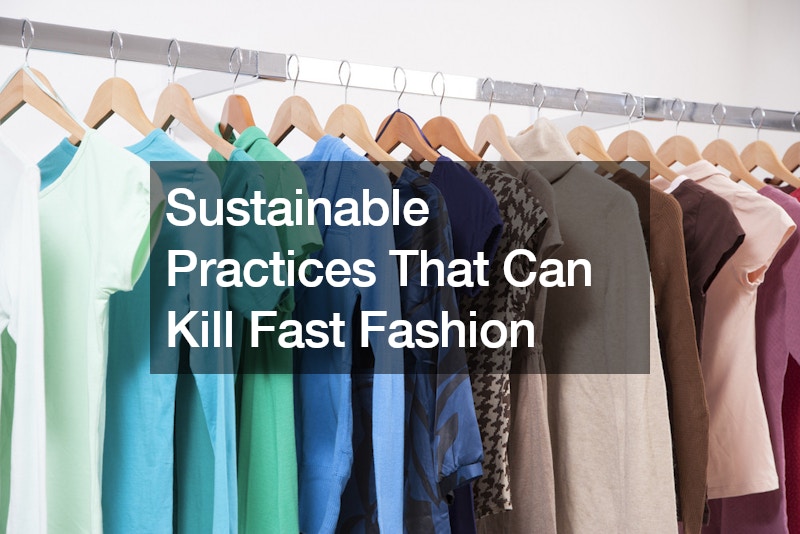Fast fashion, characterized by the rapid production of inexpensive clothing to meet the latest trends, has long been criticized for its detrimental environmental and social impacts. The industry’s reliance on cheap labor, excessive resource consumption, and wasteful production processes contribute to pollution and exploitation. However, sustainable practices offer a promising solution to counteract these issues and pave the way for a more ethical and eco-friendly fashion future. Here are some sustainable practices that can help kill fast fashion.
Embrace Slow Fashion

Slow fashion advocates for quality over quantity, emphasizing timeless designs and durable materials. By investing in well-made clothing that lasts longer, consumers can reduce their need for frequent purchases, thereby decreasing the demand for fast fashion.
Slow fashion encourages thoughtful consumption and supports brands that prioritize craftsmanship and sustainability.
Support Ethical Brands
Choosing to buy from ethical brands that uphold fair labor practices and environmental responsibility is crucial in combating fast fashion. These brands often use sustainable materials, pay fair wages, and ensure safe working conditions for their employees. Supporting such companies helps shift the market towards more sustainable practices and sets a standard for the industry.
Upcycling and Recycling
Upcycling involves transforming old or discarded clothing into new, stylish items, thereby extending the life of garments and reducing waste. Recycling, on the other hand, involves breaking down old textiles to create new fabrics. Both practices help minimize the environmental impact of fashion by diverting clothing from landfills and reducing the need for new resources.
Capsule Wardrobes
A capsule wardrobe consists of a small collection of versatile and timeless pieces that can be mixed and matched to create various outfits. By curating a capsule wardrobe, consumers can reduce their overall clothing consumption and focus on high-quality, sustainable items. This approach not only simplifies daily dressing but also promotes mindful shopping habits.
Secondhand Shopping
Buying secondhand clothing from thrift stores, consignment shops, or online resale platforms is an effective way to reduce demand for new garments. Secondhand shopping extends the life cycle of clothing, reduces textile waste, and lessens the environmental footprint of fashion production. It also offers unique and affordable fashion choices.
Educate and Advocate
Raising awareness about the negative impacts of fast fashion and the benefits of sustainable alternatives is essential. Consumers can educate themselves and others about the importance of ethical fashion practices. Advocacy efforts, such as supporting policy changes and holding brands accountable, can drive systemic change in the industry.
Adopting sustainable practices is vital in combating the fast fashion industry’s negative impacts. By embracing slow fashion, supporting ethical brands, upcycling and recycling, curating capsule wardrobes, shopping secondhand, and advocating for change, consumers can significantly reduce their environmental footprint and promote a more sustainable fashion future. Collective efforts towards sustainability can ultimately dismantle the fast fashion model and foster a healthier planet and society.

